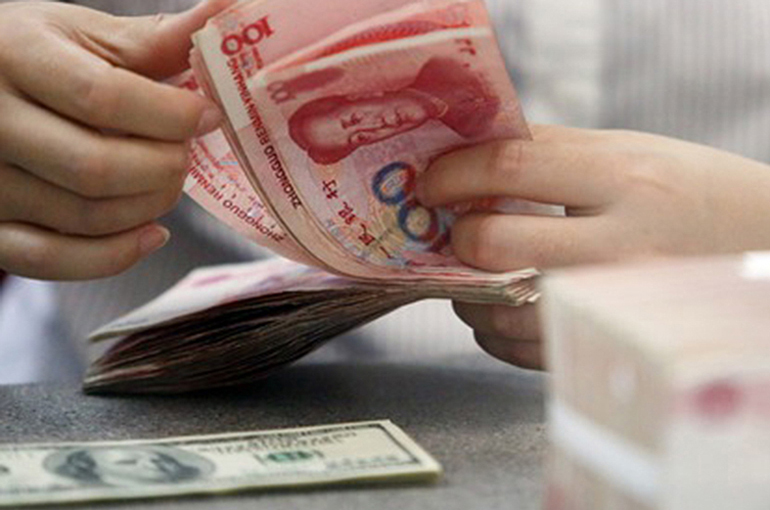 China's Cross-Border Net Fund Inflow Rebounds in Third Quarter
China's Cross-Border Net Fund Inflow Rebounds in Third Quarter(Yicai) Oct. 23 -- China’s cross-border capital flow produced a surplus in the third quarter of the year, as foreign investment in the country rose along with steady inflows into domestic bonds.
“In the first three quarters, the overall cross-border receipts and payments of bank clients showed a surplus, with a slight surplus in the first quarter, a deficit in the second quarter, and a recovery to surplus in the third quarter,” Li Hongyan, deputy administrator of the State Administration of Foreign Exchange, said at a press conference yesterday.
In US dollar terms, China’s total value of cross-border receipts and payments by non-banking sectors -- the receipts and payments between domestic non-banking sectors, including institutional and individual residents, and non-residents through domestic banks -- were USD5.2594 trillion and USD5.2566 trillion, respectively, in the three months ended Sept. 30, creating net inflows of USD2.8 billion.
“In terms of main components, the net inflows of trade in goods continued, foreign investment in China gradually improved, and domestic entities maintained orderly outward investments,” Li noted.
Another important factor affecting cross-border capital flows is the narrowing gap between China’s and the United States’ interest rates, especially in the third quarter after the Federal Reserve cut rates by 50 basis points more than expected, Xie Yaxuan, deputy director of the China Merchants Securities Research and Development Center, told Yicai. This led to more cross-border funds sensitive to interest rate spreads to return to China, he added.
Two other reasons are the increased allocation of Chinese yuan-denominated bonds by foreign financial institutions and more foreign inflows through the Stock Connect program between the Chinese mainland and Hong Kong from the end of September, Zhao Qingming, vice president of the HuiGuan Information Technology Research Institute, told Yicai.
China’s foreign exchange market was relatively active in the first three quarters of the year, reporting a turnover of USD30.27 trillion, up 10.1 percent from a year earlier, Li said. Forex settlements and sales moved toward equilibrium, she added.
The Chinese yuan exchange rate remained stable in the third quarter thanks to two-way fluctuations, showing resilience and flexibility, according to Li.
In the longer term, the Chinese yuan exchange rate will likely stabilize and rebound as economic fundamentals recover, which is an important factor for the overall improvement of international capital flows, Xie noted.
From the perspective of the international forex market, the US dollar index is still relatively overvalued but will return to a normal range in the future, Zhao predicted.
China’s Foreign Debt Scale
At the press conference held yesterday, SAFE officials also commented on China’s foreign debt scale at the end of the first half of the year.
China’s external debt balance in US dollar terms was USD2.54 trillion as of June 30, up 4 percent or USD97.1 billion from the end of last year, according to data disclosed by Jia Ning, head of the SAFE’s Balance of Payments Department.
China’s foreign debt can be divided into two categories, Jia explained. The first is external debt of companies, banks, and other departments created through overseas financing, which is directly related to cross-border trade and investment. The second is external debt formed by foreign investors purchasing Chinese bonds, which reflects their increasing appetite for Chinese yuan-denominated assets.
The second category has become the main growth point of China’s foreign debt in recent years, Jia noted.
The scale of China’s external debt is generally stable, Jia said, adding that its ratio to the gross domestic product remained between 14 percent and 16 percent.
Overseas debt repayment risks are relatively low as the debt ratio, repayment ratio, debt to service ratio, and the ratio of short-term foreign debt to forex reserves remained within the internationally recognized safety range, he pointed out.
Editor: Futura Costaglione